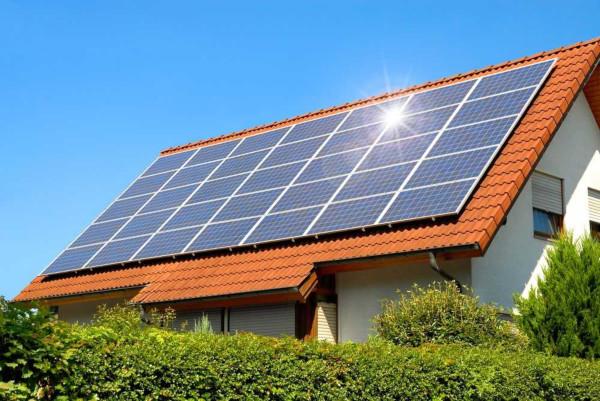Did you know that there are two basic types of charcoal? Are they the charcoal it's the mineral coal, which differ in different ways, such as origin, formation process, composition and even use. So let's find out what are the main differences in these substances?
Differences between charcoal and mineral
O charcoal is a product obtained through carbonization of biomassfrom the wood. The burning results in a black substance used as an energy source. Charcoal is little used worldwide, with the exception of Brazil which is the largest producer in the world. It is used in industry, especially in steel and metallurgy, in addition, it is used as fuel in fireplaces, barbecue grills and wood stoves.
already the mineral coal corresponds to a sedimentary rock formed through the decomposition of organic matter. When this organic matter is deposited, buried and compacted, it starts to suffer the action of bacteria under specific conditions of pressure and temperature. Over time, black or brown fuel forms in these deposits.
It is widely used in different regions of the planet, being the most used energy source for electricity generation, according to data from the International Energy Agency (IEA), and the most abundant fossil fuel in nature.
Both fuels can be used in industry and also in the production of electricity, according to the National Electric Energy Agency (Aneel). The quality of coal is measured according to its calorific power, that is, its ability to produce heat. This characteristic is related to the amount of carbon that constitutes the coal, as well as the amount of impurities present in it.
Charcoal, according to Aneel, has a low calorific power, while there is a huge concentration of impurities. In relation to coal, the calorific value, as well as the concentration of impurities, is variable, thus making the mineral to be classified into two categories: low quality and high quality. quality.
Do not stop now... There's more after the advertising ;)
Lookalso:What are energy sources?
Advantages and disadvantages
→ Charcoal
Benefits |
Disadvantages |
Is renewable energy source, low pollutant, thus not contributing to the aggravation of the greenhouse effect, except when its production is made in a rudimentary way, in kilns made of bricks capable of emitting many polluting gases to the atmosphere. |
Despite being a renewable energy source, charcoal is still produced through native vegetation and not through reforestation. This form of production increases the logging. |
It has medicinal use for the treatment of diseases such as tumors, ulcers, stomach pain, canker sores, bad breath, poisoning and intestinal gas. |
Its ability to produce heat is reduced compared to coal. |
Due to its ability to absorb impurities and being an oxygen conductor, it is considered a toxin eliminator. It was used in the period of Second World War for the removal of high toxicity gases. |
The use of activated charcoal for medicinal purposes, it should be through medical advice, given the possible side effects it can cause such as: diarrhea, constipation, dark stools and vomiting. |
→ Mineral coal
Benefits |
Disadvantages |
Compared to charcoal, coal is more energy efficient because of its ability to produce heat. |
Coal is the most polluting fossil fuel in the world. It harms the environment from its extraction to the production of by-products through combustion. |
It is capable of producing significant amounts of energy per unit of weight. |
Is non-renewable energy source, which can then run out over the years. |
Abundant in all regions of the planet, coal is easily located. |
The coal combustion process causes emission of polluting gases into the atmosphere and aggravates the greenhouse effect. |
It has the best cost-benefit when compared to alternative energy sources. |
Due to its ease of ignition, storage must be done with care in order to avoid explosions. |
Read too: Greenhouse gases
Charcoal production in Brazil
Brazil is, according to the United Nations Food and Agriculture Organization (FAO), the world's largest producer of charcoal and also one of the biggest consumers. In 2015, the country produced about 6.2 million tons, which corresponds to 12% of world production.

Charcoal is obtained from burning or carbonizing wood.
Obtaining charcoal in Brazil comes from 90% of the wood carbonization and this fuel is widely used by the industrial sector, especially the metallurgy sector. Charcoal in the country is also responsible for 30% of the production of pig iron (used in the manufacture of vehicles, machines, ships, cables).
Eight Brazilian states are responsible for the production of charcoal, according to the Brazilian Institute of Geography and Statistics. In 2015, more than 6 million tons were produced in the country from the forestry (recovery of forests through agricultural management) and plant extraction. The states that produce the most charcoal in Brazil are: Mato Grosso do Sul, Maranhão, Piauí, Bahia, Tocantins, Minas Gerais, Goiás and Mato Grosso.
Production of coal in Brazil
The mineral coal reserves in Brazil occupy the tenth place in the world ranking, according to data published by Aneel. The mineral is found especially in the states of Rio Grande do Sul and Santa Catarina in large quantities, however it has low content. of carbon, that is, it is considered poor in relation to the energy potential and of low quality due to the high ash content produced.

Coal is a sedimentary rock formed by the decomposition of organic matter.
Coal accounts for about 5% of the Brazilian energy matrix and 1.3% of the country's electricity matrix. It is mainly used in the steel industries. In 2010, the country consumed approximately 20 million tons and produced a little more than 13 million tons. According to the Government of Brazil, Brazilian reserves are sufficient to supply more than 500 years of current production.
by Rafaela Sousa
Graduated in Geography

